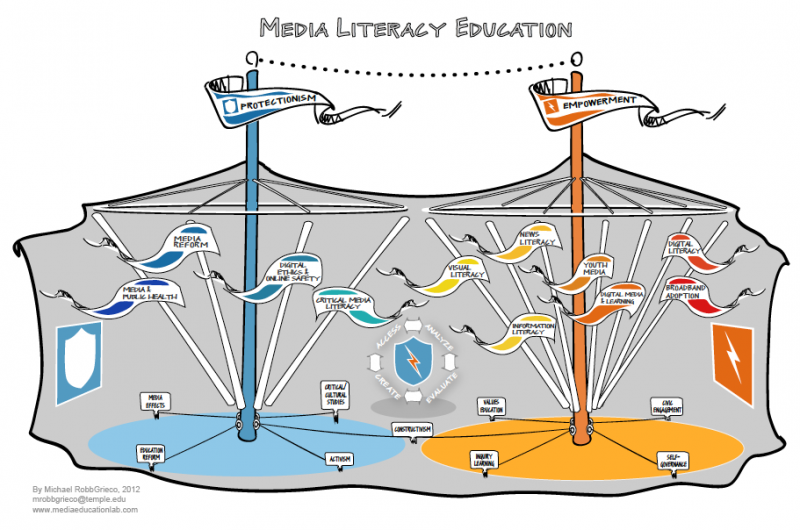Media literacy educators and scholars are a diverse community held together by a common interest in helping people access, analyze, evaluate and create media in order to enable healthier, safer, more ethical, more effective, and more powerful participation in our media and technology saturated society.

The people who design, teach, study, and engage in media literacy education do so in a variety of settings with a variety of stakeholders. Thus, reaching out from its common core principles, the media literacy education (MLE) community has many strands, each emphasizing (and sometimes neglecting) certain aspects of media literacy, and privileging certain educational goals over others. To successfully engage media literacy communities for outreach and partnership, it is important to understand the nuances of each strand within the community, and to recognize potential points of mutual interest and discord.
Each strand, setting, practitioner, stakeholder and funder of MLE cares about media literacy because of its relevance to contemporary society. For learners, relevance is the key to engagement and motivation. For parents, teachers, employers, and policy makers, MLE is attractive for its relevance to skills necessary for citizenship, jobs, and cultural participation in a mediated world. In some ways, the history of media literacy education has shifted to be relevant to one dominant media after another (from print and radio to film and television to Internet and mobile media), and to be relevant to shifts in ideas of citizenship and pedagogy. This shifting history of relevance is what MLE has to offer potential partners in outreach.
The following report maps what’s what and who’s who in the field of media literacy education today, and where, how, and why the prominent players in the field practice media literacy in various ways that may present opportunities or complications for outreach and for potential partnerships with the MLE community. With this field guide, organizations, scholars, and educators will be equipped to navigate the diverse terrain and to speak the various dialects of media literacy in order to recognize possibilities for strategic partnerships to extend educational outreach to this vast audience of educators, scholars, and learners. The report features three main sections: (A) the “big tent” of the media literacy community (including an overview of core principles, pedagogy, learning theories, and best/worst practices), (B) the two paradigms of “protection” and “empowerment” that underpin approaches to media literacy practice, and (C) each of the strands of media literacy that are prominent in various educational settings and institutions today. With the discussions of each strand, particular organizations and individuals of interest are identified as operating in that area of the media literacy community on the national and international scale. In addition to describing key players in each media literacy strand and identifying potential points of synergy and conflict for prospective partners, the report features three appendices, which go into detail about settings of MLE practice and list relevant individuals and organizations.